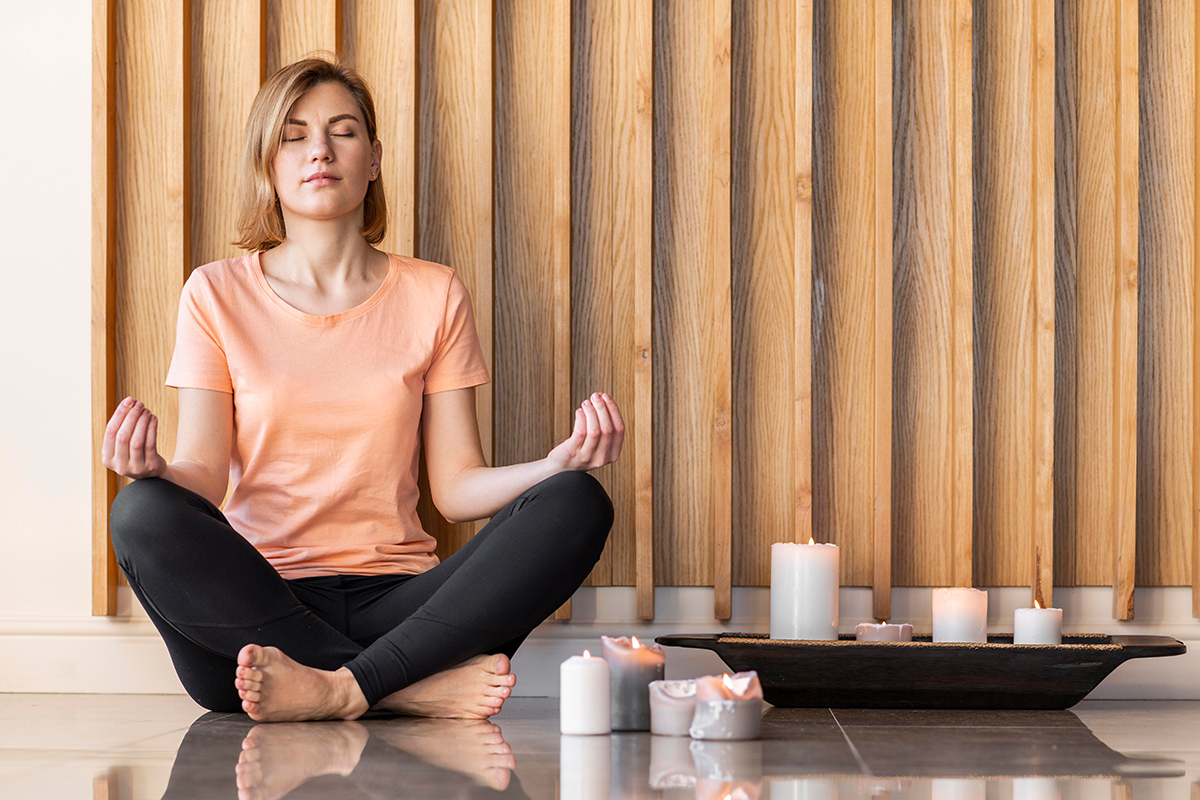Meditation is a practice aimed at improving mindfulness, reducing stress levels, and achieving inner peace. For beginners, meditation may seem complicated, but there are simple techniques that help relax and feel better. Let’s look at some of them.
Breath Meditation
Breath meditation is one of the simplest and most effective techniques that can be practiced anywhere. It helps to calm the mind, relax the body, and focus on the present moment.
Improving Emotional State
To perform breath meditation, choose a quiet place where you won’t be disturbed. Sit comfortably, straighten your back, close your eyes, and begin to breathe slowly and deeply. Pay attention to the inhalation and exhalation, observing how the air enters and exits your lungs. Gradually try to focus only on your breathing, letting go of other thoughts.
Start with five minutes of breath meditation. Set a timer and simply focus on your breathing, tracking each inhalation and exhalation. If your mind starts to wander, gently bring it back to the sensation of breathing. Over time, increase the duration of practice to 10–15 minutes.
Mindfulness Meditation
Mindfulness meditation, also known as mindfulness, involves focusing on the present moment without judgment. This technique teaches observing your thoughts, feelings, and bodily sensations without reacting emotionally. This approach helps in better understanding oneself and accepting one’s thoughts and emotions.
Stress Reduction
Begin by focusing on your body and what you feel at the moment. Start at the head and gradually “scan” the entire body, paying attention to sensations in each area. This helps to recognize where tension might be in the body and release it.
Spend 10 minutes paying attention to each part of your body, starting from your head and ending at your toes. Feel the weight of your body and notice how it touches the surface. This helps bring the mind back to the present moment and to realize what is happening in the body right now. This technique is particularly helpful for those prone to stress and anxiety.
Visualization for Relaxation
The visualization technique is based on imagining images that help relax and feel calm. It is effective for those who find it difficult to concentrate on breathing or bodily sensations.
Inner Peace
Visualization allows you to be transported to a pleasant place or situation where you feel comfortable and safe. This could be a beach, forest, meadow, or any other place that evokes positive emotions.
Choose a place where you can relax comfortably. Close your eyes, take a few deep breaths, and then imagine a calm and pleasant place. Imagine the sounds, smells, and sensations present in this place. Try to immerse yourself in this image as much as possible and stay in it for a few minutes. This practice helps distract from everyday concerns and find inner peace.
Tips for Beginners
For those just starting their journey in meditation, it’s important to remember a few simple recommendations:
Start with short sessions
Initially, it’s enough to meditate for 5–10 minutes a day. Gradually increase the time as you feel more comfortable with the practice.
Meditate at a convenient time for you
Find a time when you won’t be disturbed. Morning is a great time for meditation, as it sets a positive tone for the whole day.
Don’t expect immediate results
Meditation is a skill that needs to be developed. The first sessions may seem difficult, but over time you’ll notice improvements in your emotional state.
Be patient and kind to yourself
It’s important to understand that different thoughts and emotions may arise during meditation, and that’s normal. Don’t judge yourself for distractions; simply and gently return your attention to the technique you chose.
Try different techniques to find the one that suits you best, and start incorporating meditation into your daily life to achieve inner peace and balance.

